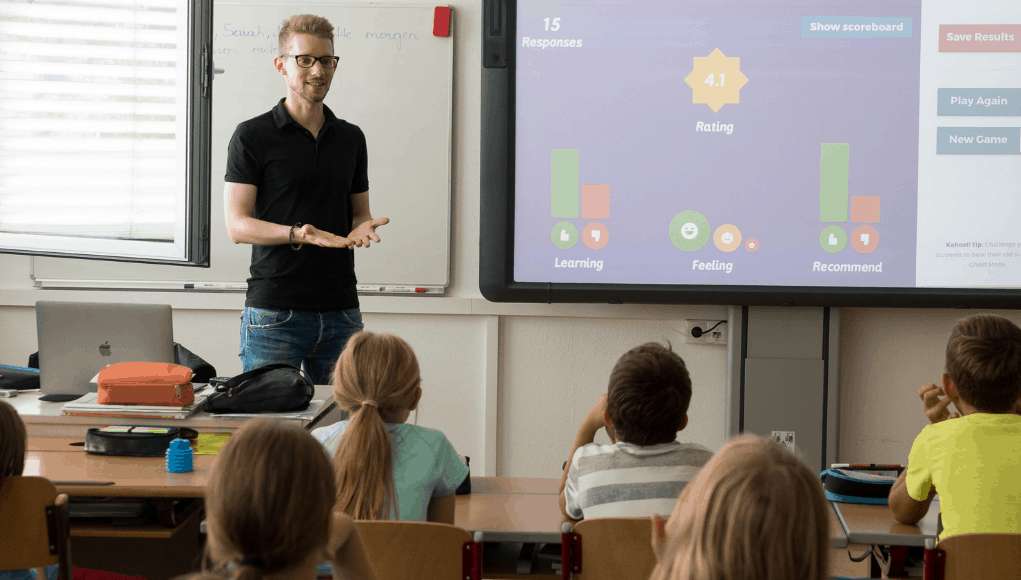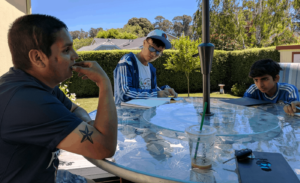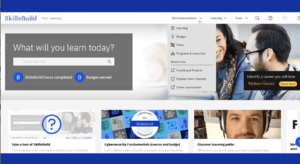The Four C’s of Student Success
Key Points
-
Education administrators need to lead with two ends in mind: keep schools open and keep students learning.
-
Focus on making sure high school graduation requirements and college and career counseling reflect what students really need after graduation.
-
Consider where students are free to interact and engage with others. Make sure those opportunities are available to every student.

By: Stephanie Malia Krauss
In communities across the country, education administrators are opening their schools with a focus on these four C’s:
- COVID-19 protocols
- Compliance requirements
- Calendars and class schedules
- Content knowledge catch-up
More than ever, district and building leaders are puzzle masters, magicians in mayhem, and solvers of complex riddles. The 4C’s of reopening schools suck up time and energy. When one thing is finished, another gets added. Demands around these 4C’s have kept leaders away from other priorities that ensure our schools and students succeed.
Thanks to the pandemic, many class lists, and master calendars have been finished, only to need to be redone. Complying with school improvement plans feels impossible. In pre-COVID times, it made sense to say all teachers would offer hands-on learning and flexible seating. Those seem hard to do while practicing safe social distancing.
While these 4C’s will keep our school doors open, they will not ensure our students learn and grow.
Education administrators need to lead with two ends in mind: keep schools open and keep students learning. To make this second piece happen, leaders must embrace a different “4C’s.” Without them, students might show up when the calendar says, attend assigned classes and courses, stay COVID-free, but not learn or grow in the ways they should.
To succeed this year and beyond, these are the 4C’s students need:
- Competencies
- Connections
- Credentials
- Cash
Given how many demands compete for educators’ time, it may be easiest to fold these four currencies into discussions and decisions already underway.
The 4C’s of student success must be pursued with as much attention, passion and focus as the 4C’s of reopening schools.
Stehpanie Malia Krauss
Competencies are abilities that help students function in the world, including at school. Competencies are highly interdependent; when one is out of balance, the rest are too. They can be taught, practiced, and strengthened. They can also be depleted. Students need competencies in different combinations and quantities, depending on who they are and what they are doing.
Research on youth readiness, adolescence, and learning points to ten competencies that matter most. These are being able to focus and get things done; being able to think and create; applying learning; problem-solving and decision making; getting and staying fit; feeling and expressing emotions; persisting through struggles; sustaining positive relationships; being present, and using insights to grow and develop.
To prioritize competency development, elevate and invest in social-emotional learning, deeper learning, and career pathways programs. These should be schoolwide strategies, rather than being slated for a single class (e.g., health, life skills), academic unit, or a subset of students. Leaders can encourage teachers to design ways to plan and assess with competencies in mind. Consider using ESSER funds designated for “learning recovery” to support partnerships with youth development providers who can do this work with you.
Connections are the relationships that support students’ social health and wealth. There are three kinds of relationships students need: lifelines, door openers, and navigators. Lifelines help students feel safe, supported, and secure. Door openers introduce students to new options and opportunities. Navigators help students make sense of a place or situation. Since COVID-19 started, the social vibrancy of students’ lives has taken a hit. This has been hardest for tweens and teens because they are wired to connect. It’s how their brains learn, work, and process life. Because of this, education leaders must design learning environments so that students have ample opportunities to socialize and be in healthy relationships with others.
To prioritize connections, consider where students are free to interact and engage with others. Make sure those are available to every student. Add additional opportunities for positive socialization into the school day. Assess your extracurricular and enrichment offerings and make sure these socially rich environments are ones that all students can access, afford, and attend – especially since COVID-19 has changed many families’ circumstances.
Credentials are more than diplomas and four-year degrees. Learning after high school is changing rapidly. Today in the US, there are more than 600,000 different postsecondary credentials available. Not only are there more credentialing possibilities, but the pricing and quality among them are hugely variable.
To prioritize credentials, focus on making sure high school graduation requirements and college and career counseling reflect what students really need after graduation. Consider ways for high school and counseling staff to get professional development on the changing postsecondary landscape, both education and the workforce. Activate partnerships with local post-secondary education institutions and employers. Ensure students and their families have up-to-date information and advice when making postsecondary plans.
Cash matters. We know this personally, but often forget it when making decisions about students in school. However, when students experience financial scarcity, it hinders their ability to focus and learn. Things get worse when students live in financial crisis or poverty. Additionally, there are key learning and developmental opportunities reserved for students with financial means. This includes school sports, band, theater, and the arts. Students need support and resources to succeed in school when money is tight or when they experience poverty. All students should be able to participate in any school activity, regardless of economics.
To prioritize cash, leaders must have ways to support students when they experience cash scarcity or crisis. They also must ensure school activities are available to every student, regardless of financial means. Public school can be expensive. Between student fees, supply requirements, and associated costs of playing sports or participating in extracurricular programs, out-of-pocket costs can be thousands of dollars each year. This is another area where recovery funds can help. Just like making meals free for students, consider waiving student and activity fees this year (and forward, if you can).
Education leaders have been asked to run districts and schools in an impossible time of risk, division, and uncertainty. Even so, this is the third year of disrupted learning students have experienced, during periods of critical growth and development. The 4C’s of student success must be pursued with as much attention, passion, and focus as the 4C’s of reopening schools. It is hard and complex work, but necessary for our students’ well-being and well-becoming.
Stephanie Malia Krauss is author of Making It: What Today’s Kids Need for Tomorrow’s World. She is the founder of First Quarter Strategies, a senior advisor with Job For the Future, senior fellow with Education Northwest, and staff consultant with the Youth Transition Funders Group. Stephanie is an educator and social worker, with experience as a classroom teacher and school leader.







Veena Reddy
The four C's which although might sound like the most common things, yet these are where a student's learning starts and ends with. Making sure these areas of a student's life are non-stressful and open- to learning will help them achieve better things in life.